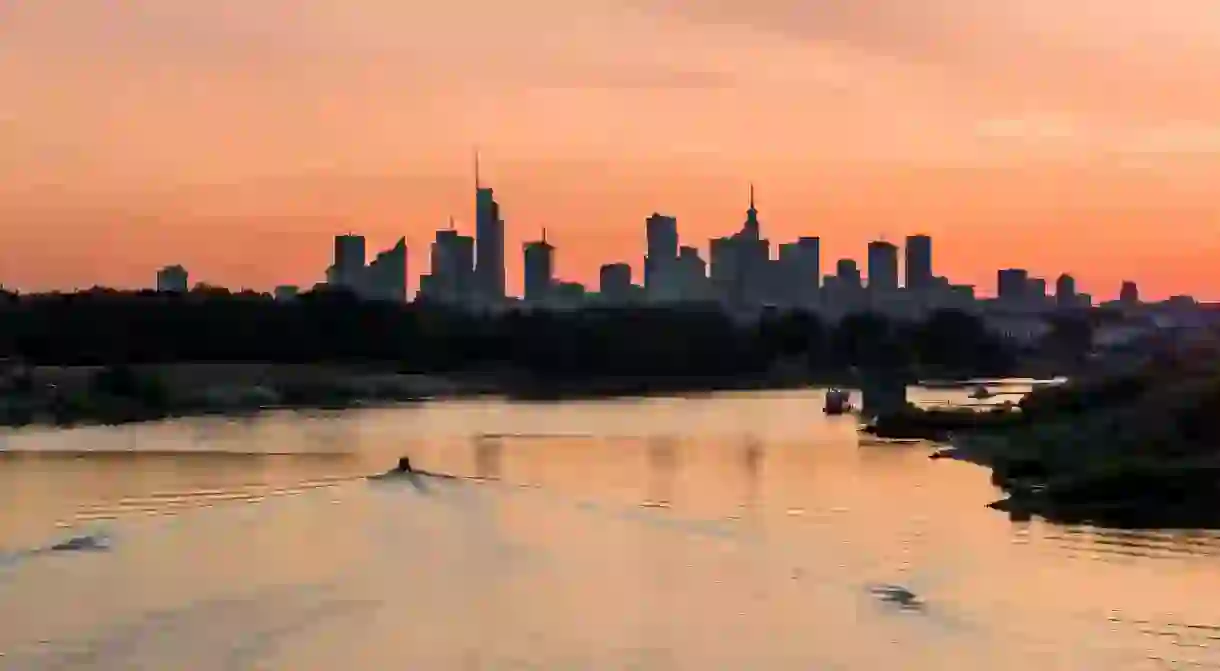22 Must-See Attractions in Warsaw

Whether you’re a classical music freak, science nerd, visual-art aficionado or history buff, Warsaw has a lot to offer. If you’re planning a trip to Poland’s beautiful capital city, check out these places to visit to make the most of your Warsaw sightseeing.
Old Town
Architectural Landmark, Historical Landmark

Included on the Unesco World Heritage list, Warsaw’s Old Town was completely rebuilt after World War II, based mostly on 18th-century paintings by the Italian painter Canaletto. The heart of the area, guarded proudly by the Mermaid of Warsaw, is the Old Town Market Place with its restaurants and cafes. Visitors should also make sure to see the Barbican and St John’s Cathedral, as well as explore the picturesque winding streets.
Royal Castle
Cathedral

Muranów
Architectural Landmark
Built right after the war on the rubble from the completely destroyed Jewish ghetto, Muranów was designed as a memorial, housing estate and representation of the ideology of socialist realism. Walking around the neighbourhood, visitors can see and feel the city’s history outside of pristine museum walls.
Łazienki Królewskie Park – Palace Complex
Botanical Garden, Park

Warsaw Uprising Museum
Museum, Building
Fryderyk Chopin Museum
Museum
Wilanów Palace Museum and Park
Museum, Building

Warsaw Fotoplastikon
Theatre
Museum of Warsaw
Building, Cinema, Market, Museum, University
Zachęta – National Gallery of Art
Museum
National Museum
Museum
Palace of Culture and Science
Building
POLIN Museum of the History of Polish Jews
Building, Museum
Keret House
Building
Copernicus Science Centre
Museum
Vistula River
Natural Feature

At the weekend, both sides of the river become a buzzing meeting spot – especially popular among young people. The east side, with its sand and grass, is characterised by a more natural feel and countless campfires, whereas the west side, covered in concrete, attracts people with numerous food trucks and beach bars.
Museum of Neon
Museum
Koneser Vodka Distillery
Distillery
Powązki Cemetery
Cemetery
The resting place of some of the most important names in the country’s history, Powązki Cemetery is a real treasure, with impressive sculptures from the Neoclassic period and Secession to contemporary art. Established in 1790 by King Stanisław August Poniatowski, the cemetery’s catacombs house the remains of the King’s family and members of his court. In 1925, the Aleja Zasłużonych (Avenue of Merit), located along the southern wall of the catacombs, became a resting place for accomplished Poles, including Noble Prize-winning writer Władysław Reymond and writer Maria Dąbrowska.
State Ethnographic Museum
Museum

Trakt Królewski (the Royal Route)
Architectural Landmark
Trakt Królewski (‘The Royal Route’) is undoubtedly the most beautiful part of the city, encompassing five connecting streets on which many culturally important buildings and monuments are located. It starts on the edge of the Old Town and stretches for over a mile. After touring the UNESCO-listed Old Town, head along Krakowskie Przedmieście street (check out the University of Warsaw’s campus, Church of St Anne, Nicolaus Copernicus’ monument, and the Polish Academy of Sciences), then onto the swanky Nowy Świat street (great for bars and cafés), down Aleje Ujazdowskie (check out the Three Crosses Square with St Alexander’s Church) and end at the famous Royal Łazienki Park. Recommended by Jonny Blair.
Wedel Chocolate Factory
Museum
Poland’s finest chocolate is made in the Wedel Factory in the city’s Praga district. As well as getting a tour and sampling the famous chocolate, this also allows you to see the other side of Warsaw – Praga is an up-and-coming part of the city. The factory itself offers daily tours and has a gift shop and a trademark café that serves up great coffee and hot chocolate to go alongside sweet treats made with Wedel chocolate. Recommended by Jonny Blair.













